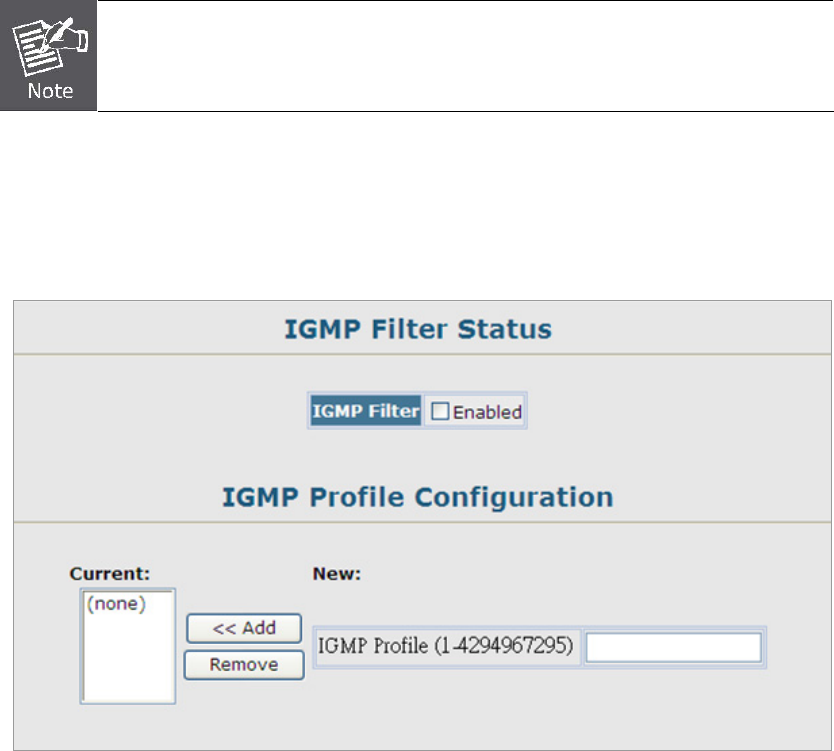
User’s Manual of SGSD-1022 / SGSD-1022P
SGSW-2840 / SGSW-2840P
214
4.9.2 IGMP Filter and Throttling
In certain switch applications, the administrator may want to control the multicast services that are available to end users. For
example, an IP/TV service based on a specific subscription plan. The IGMP filtering feature fulfills this requirement by restricting
access to specified multicast services on a switch port, and IGMP throttling limits the number of simultaneous multicast groups a
port can join.
IGMP filtering enables you to assign a profile to a switch port that specifies multicast groups that are permitted or denied on the
port. An IGMP filter profile can contain one or more, or a range of multicast addresses; but only one profile can be assigned to a
port. When enabled, IGMP join reports received on the port are checked against the filter profile. If a requested multicast group
is permitted, the IGMP join report is forwarded as normal. If a requested multicast group is denied, the IGMP join report is
dropped.
IGMP throttling sets a maximum number of multicast groups that a port can join at the same time. When the maximum number
of groups is reached on a port, the switch can take one of two actions; either “deny” or “replace”. If the action is set to deny, any
new IGMP join reports will be dropped. If the action is set to replace, the switch randomly removes an existing group and
replaces it with the new multicast group.
IGMP filtering and throttling only applies to dynamically learned multicast groups. It does not
apply to statically configured groups.
4.9.2.1 IGMP Filter Profile Configuration
To implement IGMP filtering and throttling on the Managed Switch, you must first enable the feature globally and create IGMP
profile numbers.
Figure 4-9-8 IGMP Filter Profile Configuration page screenshot


















